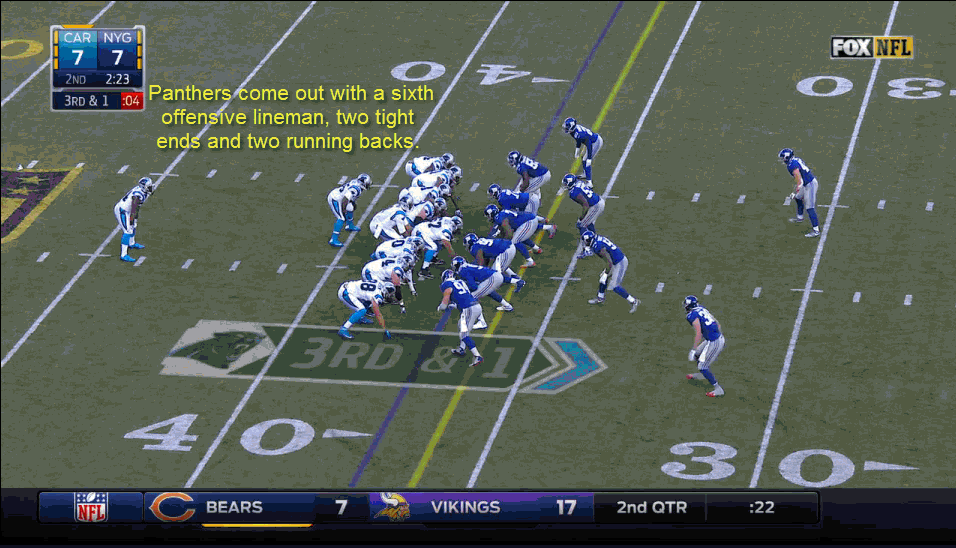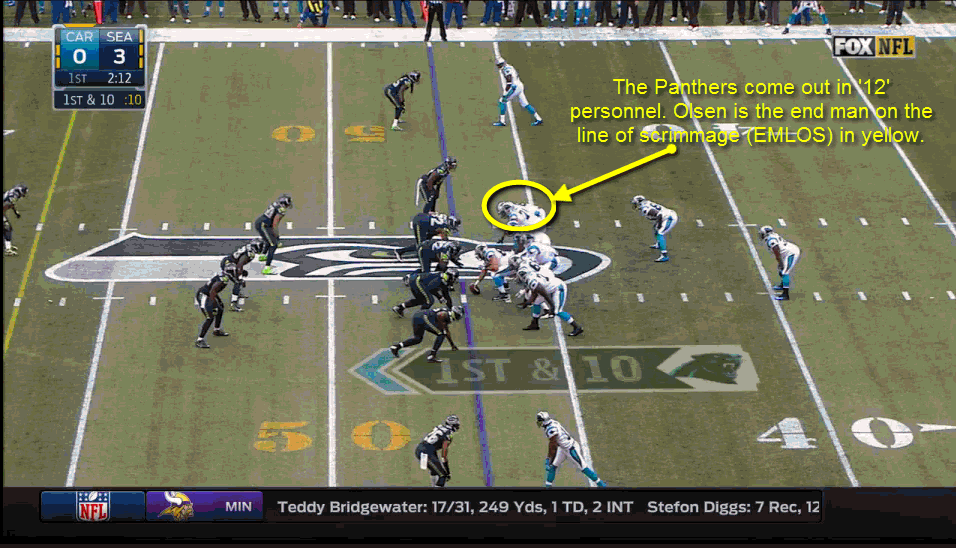Durkin's Playbook: Greg Olsen Is The Panthers' X-Factor
By Dan Durkin--
(CBS) Historically, NFL quarterbacks have operated from within the pocket, as brave triggermen who stand tall with their eyes fixed down the field, surveying unfolding route combinations as a mass of humanity with competing agendas struggle to own their area of the field.
There have always been exceptions to the rule -- Fran Tarkenton, Steve Young, Randall Cunningham, Donovan McNabb and Michael Vick to name a few. They were dual-threats who put stress on the defense both in and out of the pocket.
But more often than not, the quarterback isn't a threat to break the pocket, which tilts the math in favor of the defense to play 11 on 10. They can drop an extra defender into the box for run support, use a spy or safely double team their opponent's biggest threat in the passing game.
Enter Carolina quarterback Cam Newton.
No player has had a greater effect on defenses than Newton has this season. Regardless of the outcome of Super Bowl 50 on Sunday evening, he should be the runaway winner of the league's MVP award. He finished second in the league in both passing touchdowns (35) and rushing touchdowns (10).
Panthers offensive coordinator Mike Shula has done a masterful job of tailoring his scheme to capitalize on Newton's unrivaled skill set. The Panthers utilize the league's most diverse running scheme (power, counter, sweep, zone) and have bolted on an array of read-option schemes (zone read, power read, dash read, triple option), then top it off with a full complement of play-action vertical passes.
No team scrambles a defense's pre- and post-snap keys better than the Panthers.
The misdirection and movement they employ gets the eyes of second-level (linebacker) and third-level (secondary) defenders into the backfield. Defenders are programmed to read keys like the helmet (or "hat") level of offensive linemen for run or pass indicators or a running back's footwork. From that initial key, they will follow the flow of offensive guards and running backs to lead them to the football.
The Panthers are keenly aware of this. They're adept at setting traps to draw defenders closer to the line of scrimmage, only to sneak their limited-yet-speedy receivers deep down the field in single coverage, as well as their biggest threat in the passing game, tight end Greg Olsen.
Olsen's frequently flexed out, used as the end man on the line of scrimmage (EMLOS) on the back side of three-by-one offensive sets, used in a two-point stance on the line of scrimmage or set up in the slot as the No. 2 receiver in a two-by-two offensive set. The goal of those alignments is to get Olsen advantageous matchups against linebackers and safeties, against whom he can use his straight-line speed, body control and keenness for reading coverages to adjust his route accordingly to find voids in the defense and gain separation.
As linebackers and safeties are influenced by Newton and the action in the Panthers' backfield, more open space is created between the second and third level of the defense, in which Olsen operates as well as any tight end in the league.
Let's step into the film room to take a closer look at some of the play-action concepts the Panthers use with Olsen to move the chains and put points on the scoreboard.
(All images courtesy of NFL Game Rewind)
The first example comes from the Panthers' game against the Giants. The Panthers are facing a third-and-1 in Giants' territory. They come out with six offensive linemen, two tight ends and two running backs in a goal-line package. The Giants counter with a nine-man box with their safeties walking up into the box.
The Panthers do an excellent job of selling a "power" run scheme and run a bootleg off of it into the boundary. Their offensive line works in concert toward the point of attack, and they pull an offensive guard to get flow from the inside linebackers.
Olsen sells the run fake with a down block as Newton bootlegs. Knowing Newton can easily convert this with his legs, the safety reads a run key and drives downhill to attack Newton. In the process, he loses his coverage responsibility, as Olsen slips into the field uncovered for not only a third-down conversion but a touchdown.
Here's an animated gif of the play in its entirety.
The next example comes from the Panthers' regular-season game against the Seahawks. The Panthers come out in 12 personnel with Olsen as the EMLOS on the right side. This play reads like a lead strong to Mike Tolbert with Ed Dickson leading the way, but the Panthers run play-action off of it.
The play-action fake sold by Newton and Tolbert influences Kam Chancellor, the strong safety walked up into Seattle's eight-man box. Chancellor reads run and drives downhill, vacating his zone responsibility, the flat in this Cover-3 coverage. This misstep from Chancellor allows Olsen to bend his over route into the void for a first-down throw, getting the Panthers into Seahawks' territory.
Here's an animated .gif of the play in its entirety.
Here's another example of play-action deep in Seahawks' territory. The brief hesitation from linebacker Kevin Pierre-Lewis allows Olsen to gain leverage to the boundary on the wheel route, which Newton drops in the bucket. The Panthers were able to punch it in two plays later.
Denver cornerbacks Chris Harris Jr. and Bradley Roby have the speed to match up against the likes of Ted Ginn Jr. and Corey Brown, whom the Panthers feature in their vertical passing game. However, Olsen presents a matchup issue much like Patriots tight end Rob Gronkowski did two weeks ago in the AFC Championship game.
The Broncos threw a variety of coverages at Tom Brady and matched safety T.J. Ward up against Gronkowski when he was lined up as the No. 1 receiver, and a linebacker and safety combination when he was the EMLOS. Both Ward (ankle) and free safety Darian Stewart (MCL) -- a crucial piece to the Broncos' deep coverage schemes -- aren't at full strength heading into the Super Bowl.
While Olsen isn't the physical mismatch that Gronkowski is, he's an even more nimble athlete with better top-end speed in the open field. Look for Shula to use Olsen inside in two-by-two sets and as the EMLOS to get him matched up with linebackers Brandon Marshall and Danny Trevathan underneath.
Newton's without question the best playmaker on the field in the Super Bowl, but Olsen may be the X-factor for the Panthers.
Dan Durkin covers the Bears for CBSChicago.com and is a frequent contributor to 670 The Score. Follow him on Twitter @djdurkin.








